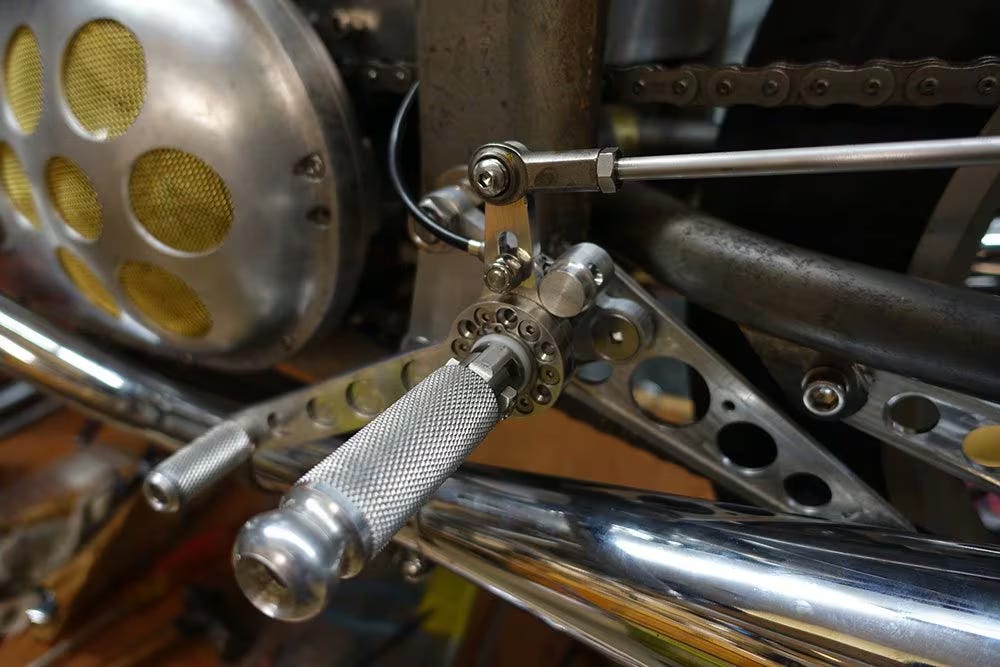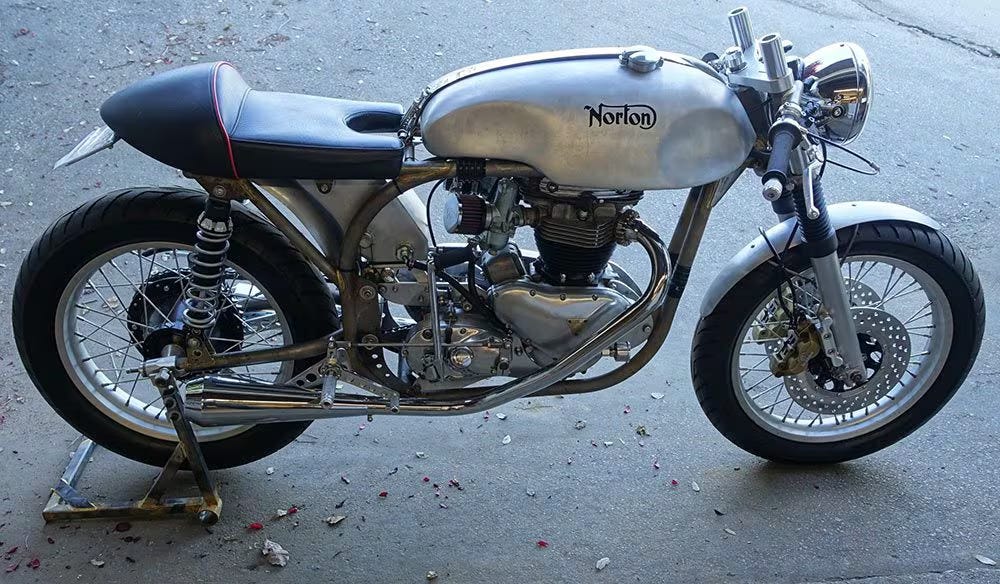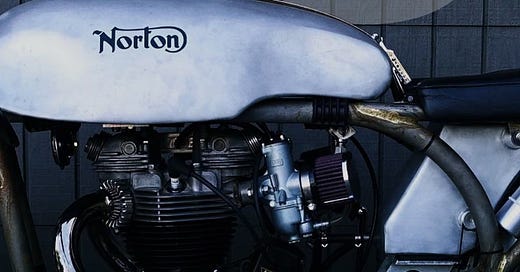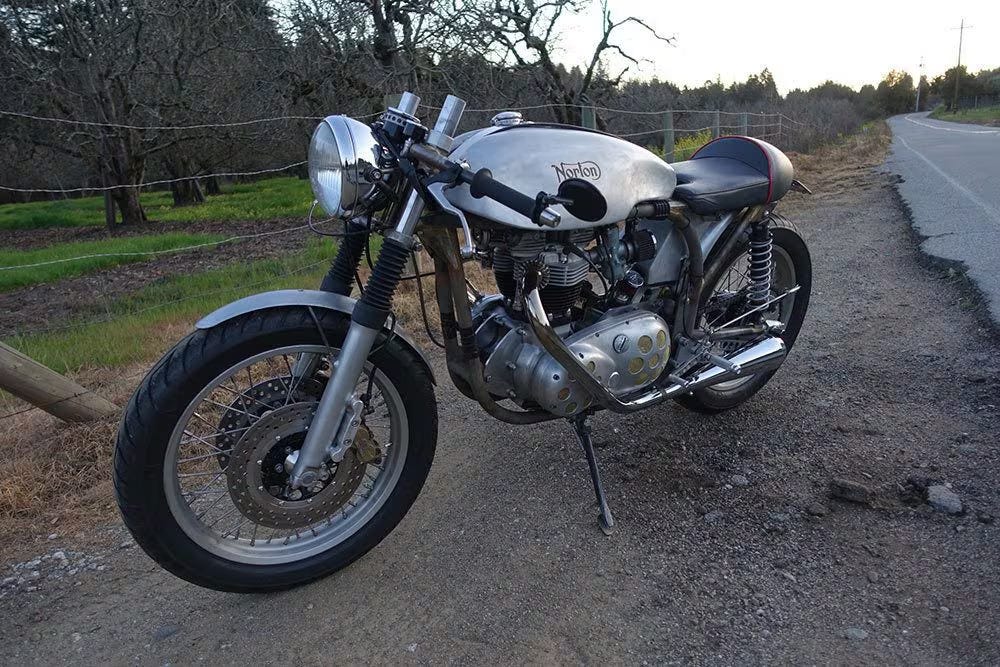Resurrecting A 1953 Norton Dominator 88 - Part 2
Deciding which components to make and which ones to buy.
This article originally appeared on the Cycle World website in early March 2018, when I was Senior Editor.
In Part 1 of "How Would You Resurrect A 1953 Norton Dominator 88?", California bicycle framebuilder Todd Ingermanson described how he obtained a basket case from New Zealand and the steps he's taken over the past 18 years to breathe new life into a highly desirable machine. Here's Part 2.

“While this list might seem fairly short, all these disparate parts needed one, two, three, or a half dozen parts made to have them mate up to the other parts they were attaching to,” Ingermanson explained. “I became a one-man adapter-making machine. There was a lot of re-doing things that a step or two after completion were found to be in the way of—or somehow otherwise interfering with—another part. It took four attempts to get the rearset placement correct. It took three rebuilds of the gearbox to figure out that a re-pop kickstart pinion was made incorrectly and was locking up the gearbox.”
Triumph (non-slick shift) four-speed gearbox rebuilt with replaced seals, bearings, bushes, cam plate, and complete gearset from a 1972 bike (word is they got the hardening of steel figured out after the BSA merge in '71) which appeared brand new. Probably replaced when new with an aftermarket five-speed gearset available then
Later-model Norton in-line oil filter fitted. These old motors had no real oil filter.
Barleycorn rearsets with fabricated mounts, linkages, and brake switch pull
New rear Fox Podium shocks
New minimal wiring harness, lights, horn, regulator/rectifier/capacitor, alternator, and switches, using the magneto to run the engine, and an alternator to run everything else, running battery-less. Not a single Lucas item on the bike!
“Some of it was my ignorance, some of it was hard luck, and some of it was negligence by previous owners. It can also be done more easily with no concessions to aesthetics, but that’s not how I roll. Making nice-looking stainless oil hose fittings takes time. Trying to have the breather hose follow the line of the oil pressure gauge, which repeats the line of the frame’s front down tube takes time.
When Keanu Rode His Norton From Canada To Florida To Deliver A Script
Formula 1 fans were likely surprised to see motorcycle devotee and Hollywood actor Keanu Reeves host Brawn: The Impossible Formula 1 Story (now available to watch on Disney + and Hulu). Reeves also executive produced the four-part story of how Ross Brawn, in 2009, made the impossible happen: his understaffed, underfinanced and independent team won the F1 World Championship.
“It seems like a lot of work to have a relatively standard-looking Triton. I suppose it may be. I really wanted a relatively standard-looking Triton though, so it worked out well. In my opinion, the Norton Manx is the most beautiful motorbike ever made, hands down. While a Triton is not a Manx, it represents what hundreds of people have done over the decades to get a ‘poor man’s Manx,’ and paying tribute to that is close enough for me. It’s not an SR500 with a Manx-style tank and seat on it; this is a real live icon.”
Like bicycle stories? Check out Bicycles Are Drugs.
So what’s remaining on Ingermanson’s to-do list?

“I need to ride the snot out of it to make sure I’ve done things right,” he added. “Make sure I’ve gotten the right geometry, rider position, wiring, plumbing, etc.
“The frame needs to have the sidestand permanently attached, and the engine breather routed into the frame tubes instead of the breather catchment bottle temporarily attached. There will also be fittings brazed on so as not to use zip-ties around the tubes of the frame. That drives me nuts for some reason.
“Forks and the steering stem need to be shortened once the correct tune, ride height, and steering angle/offset/trail have all been determined. I’ve got a good idea what I wanted, but theory and practice are sometimes a bit different. So far it rides really great, but sometimes there’s one or two scenarios that are tough to foresee. I may end up making a new set of yokes with the larger offset of the original Roadholder yokes, if for nothing else, just to see.

“The suspension needs to get really sorted,” Ingermanson explained. “The springs in both the front and the rear are a bit stiff; I’d like to add a steering damper. There are a thousand more bugs I’ll find in the next six months or so. As I mentioned, I only used the front half of the frame in this project. I still have all the parts imported from New Zealand and I recently acquired a ’54 featherbed frame.
“I don’t think I’ll really be done for a good long while…”






